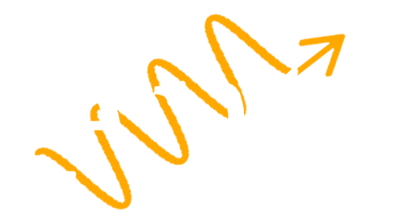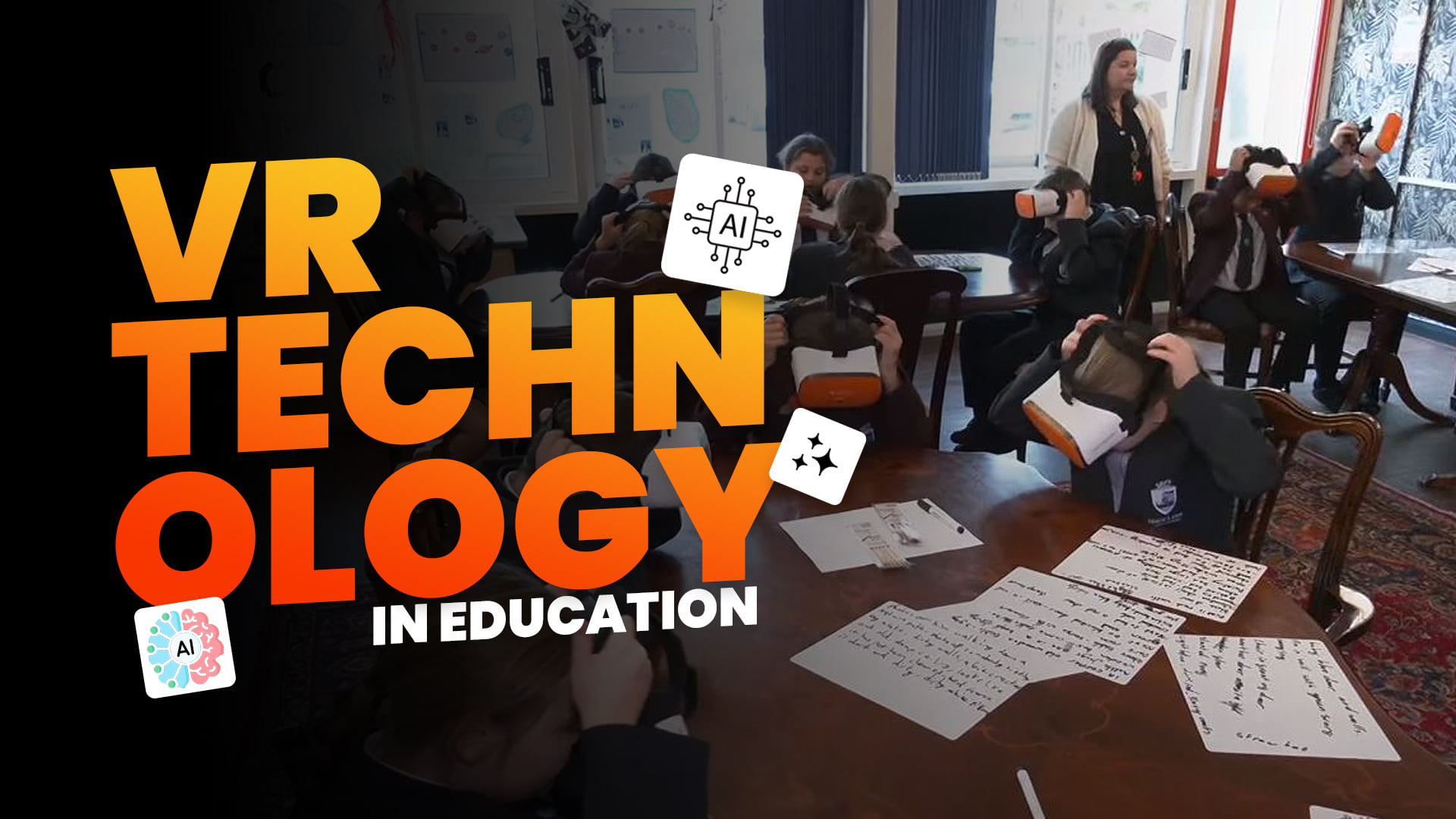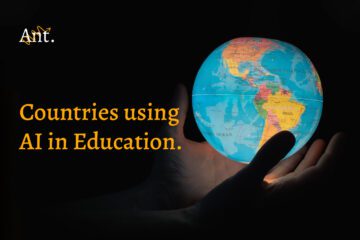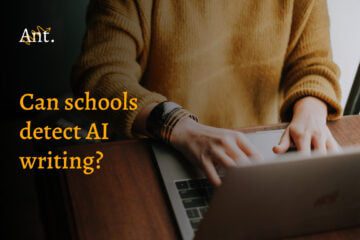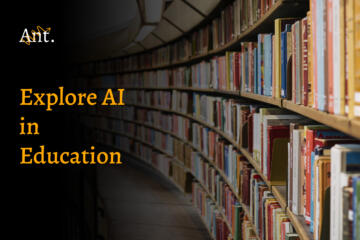A pilot program for a metaverse school is being developed where students from all over the world can learn using VR headsets (A device simulation of an environment in which users can interact). This school is a digital replica of a real school in England, and students can use VR to explore different subjects in a more immersive way.
For instance, students can virtually walk through a heart to learn about its anatomy or take a virtual field trip to any location in the world.
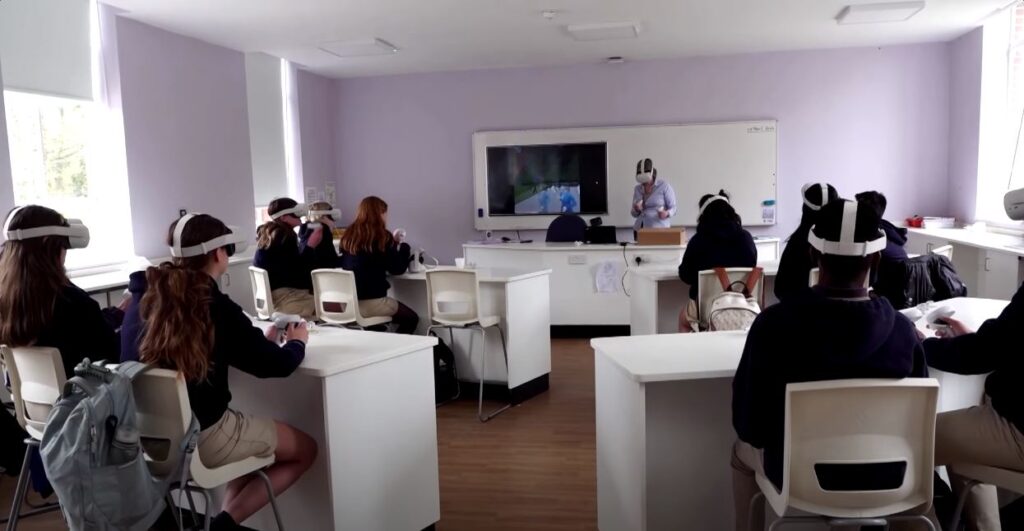
Our research suggests that Virtual Reality can help students learn and retain information more effectively than traditional methods. Here are some specific details to know more about the advantages of Virtual Reality in Education:
- Students can manipulate objects in VR, allowing them to gain a better understanding of how things work.
- VR can be used to simulate dangerous or impossible experiences, such as traveling to space or back in time.
The metaverse school is still under development, but AI has the potential to completely change education by making it more accessible and fun for students worldwide.
Advantages of Virtual Reality in Education
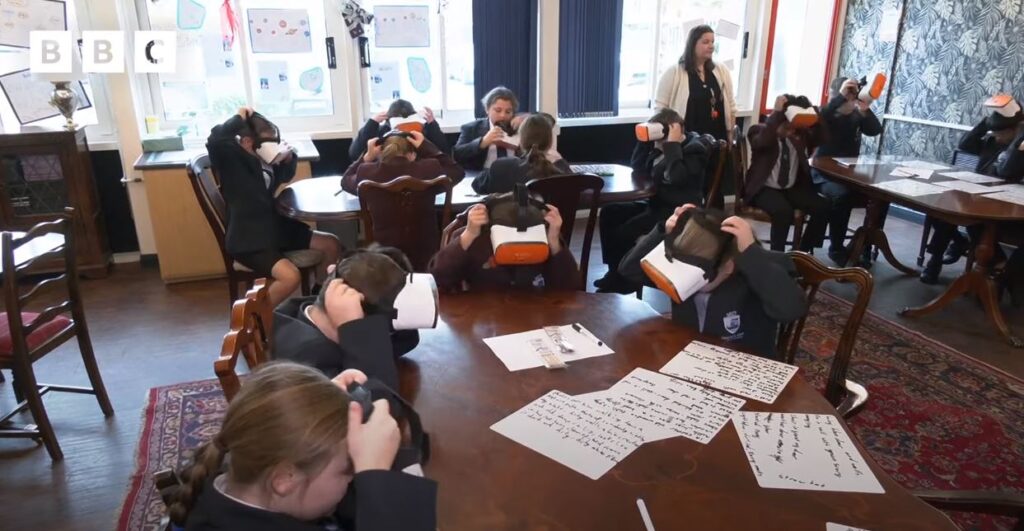
Understanding of Complex Topics with VR
- VR allows students to directly interact with and explore virtual environments and simulations, providing them with a firsthand experience of the subject matter.
- This hands-on approach facilitates a deeper understanding of complex concepts and abstract scenarios that might be difficult to grasp through traditional methods like textbooks or lectures, which rely solely on visual representations or theoretical explanations.
- For example, students can virtually walk through the human body to understand its anatomy, explore the surface of Mars to learn about its geography or reconstruct historical events to gain a deeper understanding of their causes and outcomes.
Learning Gets Fun
- VR environments are inherently interactive, allowing students to manipulate objects, navigate through virtual spaces, and participate in simulated activities.
- This active engagement with the learning material fosters deeper thinking, problem-solving skills, and critical analysis, leading to a more active and engaging learning experience compared to passive learning methods.
- Studies suggest that actively engaging with the learning material through VR can improve knowledge retention and recall compared to traditional methods like reading or lectures.
Explore Anywhere
- VR technology can overcome limitations imposed by physical location, cost, or safety concerns, making it possible for students to experience diverse learning environments that might not be accessible in the real world.
- This includes virtual field trips to historical sites, museums, or remote locations, scientific simulations of natural phenomena or complex systems, or even immersive historical reenactments.
- VR can offer flexible and accessible learning opportunities for students who are unable to travel due to geographical limitations, disability restrictions, or financial constraints.
Using Your Senses to Learn Better
- VR can create immersive and engaging learning environments that utilize multiple senses like sight, sound, and even touch.
- This multi-sensory approach caters to diverse learning styles, benefiting students who learn best visually, kinesthetically, or auditorily.
- By engaging multiple senses, VR can enhance the learning experience and improve knowledge retention for a wider range of learners.
Learning by Doing and Testing Ideas
- VR aligns with constructivist learning principles, where students actively construct knowledge through experiences.
- By providing students with the opportunity to test their knowledge and understanding in a safe and controlled virtual environment, VR encourages active hypothesis testing and promotes deeper learning.
- This approach contrasts with traditional passive learning methods and empowers students to take ownership of their learning journey.
Importance of using VR in Education
The research was published in 2018 by the 6th RSI International Conference on Robotics and Mechatronics (IcRoM). Says that studies have revealed that AR and VR have strong potential for helping students improve their skills and knowledge.
The Importance of Using Virtual Reality in the Educational Process of Higher Educational Institutions), Here are some key points about the importance of VR in education:
Enhanced Learning Engagement
The study suggests that VR can significantly increase student engagement compared to traditional teaching methods. This is because VR creates interactive and immersive learning experiences that stimulate students’ senses and capture their attention more effectively.
Improved Knowledge Retention
The research indicates that VR can lead to better knowledge retention compared to passive learning methods. By allowing students to actively participate and interact with the learning material in a simulated reality, VR can help them form stronger cognitive connections and understand complex concepts more deeply.
Increased Accessibility and Diverse Learning
The paper highlights the potential of VR to overcome geographical limitations and provide access to learning experiences that might not be possible in the real world, such as simulated experience trips or simulations of historical events. Virtual Environment can also cater to diverse learning styles by offering multimodal learning experiences, potentially benefiting students who learn best visually, kinesthetically, or auditorily.
Development of Practical Skills
The research mentions the potential of VR for developing practical skills in various fields. It can provide students with safe and controlled environments to practice procedures, conduct experiments, or participate in simulations relevant to their area of study.
Overall, the research paper emphasizes the potential of VR in education to create more engaging, effective, and accessible learning experiences for students, leading to improved knowledge retention or focus, skill development, and a more diverse and interactive learning environment.
VR and AI in Education: The Future of Learning
VR and AI have the potential to completely change the education system by making it more engaging, effective, and accessible. VR can create immersive learning experiences that allow students to explore different worlds and concepts in a hands-on way.

For example, students can go on virtual field trips to faraway places or have experiments that would be too dangerous or expensive to do in real life. AI-powered tutors can provide students with personalized instruction and support, answer their questions, and guide them through their learning.
- VR and AI can help to address some of the challenges facing education today, such as the teacher shortage and the need for more engaging teaching methods.
- VR can provide students with access to high-quality learning experiences, even if they don’t have a qualified teacher in their school.
- AI-powered tutors can help to personalize learning for each student, which can lead to better outcomes.
Overall, the future of education is with VR and AI. We believe that these technologies have the potential to make learning more engaging, effective, and accessible for all students.
Examples of Virtual Reality in Education
Virtual reality is being used in multiple industries like Education, Entertainment, Healthcare, Architecture & Engineering, Retail & E-commerce, Automotive, Travel & Tourism, Real Estate, Military & Training, Manufacturing & Construction, Fitness & Wellness, and Art & Design.

But in this particular article we are specifically talking about Virtual Reality in Education so here are real world examples of how augmented reality (AR) and virtual reality (VR) are being used in education.
Sky View (AR)
Sky View uses your smartphone’s camera to overlay information about the night sky in your real-world view. As you point your phone at the sky, it identifies constellations, stars, and planets, providing labels and educational information.
Frogopedia (AR)
The Frogopedia app uses AR technology to create a virtual dissection of a frog on your smartphone or tablet screen. Users can interact with the virtual frog, exploring its internal organs and learning about their functions in an interactive and engaging way.
Google Expeditions (VR)
This is the Google product this VR app allows students to embark on virtual field trips to various locations around the world, even those that may be inaccessible in reality, like the Great Barrier Reef or the pyramids of Giza. They can explore these locations in a 360-degree immersive environment, gaining firsthand experiences and enriching their understanding of different cultures and historical sites.
Virtual Speech (VR)
This VR app provides a safe and controlled environment for students to practice public speaking. They can deliver their presentations in front of a virtual audience, receiving feedback and overcoming anxieties associated with speaking in public.
1943 Blitz VR experience
This VR experience allows users to step back in time and immerse themselves in the historical event of the 1943 bombing of Berlin. By experiencing the sights and sounds of the event firsthand, users can gain a deeper understanding of the historical context and the human impact of such events.
Police training VR
VR is being utilized in police training to create simulations of various situations officers might encounter, such as riots, arrests, and de-escalation scenarios. By practicing these scenarios in a safe and controlled VR environment, officers can develop critical skills and decision-making abilities for real-world situations.
Mondly (VR)
This language learning app (Mondly) uses VR to create immersive language learning experiences. Users can converse with virtual characters in their target language, practicing conversation skills and receiving feedback in a simulated real-world environment.
Mersive (VR)
Mersive is a VR platform designed for professional training and education. This platform allows organizations to create and share custom VR training experiences for various industries, including education, healthcare, and manufacturing.
Talespin (AR/VR)
Talespin is a platform that allows users to create interactive AR and VR experiences. Educators can utilize this platform to develop engaging and immersive learning experiences for various subjects, fostering student engagement and knowledge retention.
These are just a few examples of how AR and VR are changing education to 180 degrees. These AR and VR technologies are continually evolving and getting better from time to time, we can expect even more innovative and effective ways to use them in teaching and learning.
